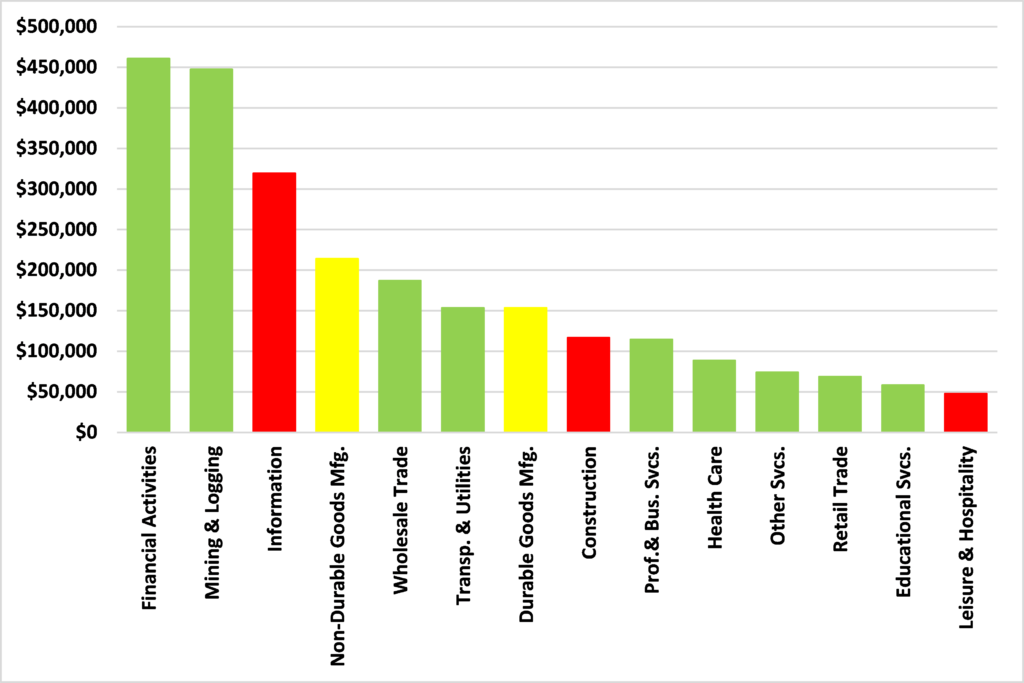September employment report: Jobs gains in high productivity sectors should boost Minnesota’s economy
Last week, Minnesota’s Department of Employment and Economic Development announced that 6,400 jobs were created in the state in September. Our state’s seasonally adjusted unemployment edged down from 3.8% to 3.7%.
There are jobs and then there are jobs
The good news, besides the headline figures, was with the type of jobs that we got.
As we’ve written before, economic growth is the increase in output, not the increase in work, which is an input. And, as we’ve also written, some jobs are more conducive to turning that input into outputs.
One way to measure that is to look at the Gross Value Added per employee in each industrial sector. We do this in out forthcoming report, The State of Minnesota’s Economy: 2017. The results can be seen in the chart below which shows GVA per worker in each of the industrial sectors for 2016.
Figure 1: GVA per employee

Source: Bureau of Labor Statistics and Bureau of Economic Analysis
The sectors colored green are those where Minnesota gained jobs in September, those in red are where we lost. Manufacturing employment held firm. The table below provides a breakdown.
Table 1:

Source: Bureau of Labor Statistics and Bureau of Economic Analysis
Jobs were lost in Leisure & Hospitality, one of the lowest ranked sectors in terms of GVA per employee, and in Information, one of the higher rated ones. Fortunately, higher productivity sectors such as Mining & Logging and Financial Activities delivered small job growth which made an outsized contribution to the state’s gain of GVA for September of $479.6 million.
To see the contributions of different sectors, compare Mining & Logging and Educational and Health Services. Excluding Government, Educational and Health Services delivered 16% of Minnesota’s September job gains while Mining & Logging contributed just 2%. But, in terms of GVA, Mining & Logging delivered 5% of the gains while Educational and Health Services contributed just 8%.
To repeat, this is in no way to denigrate jobs in these sectors. Health and education are vital. But to have high quality hospitals and schools and to be able to afford that week in the cabin Up North, we need high productivity, high wage jobs. This is key for the state’s economic future. While the last month’s figures move in this direction, the longer term trends ought to be cause for concern.
John Phelan is an economist at Center of the American Experiment.